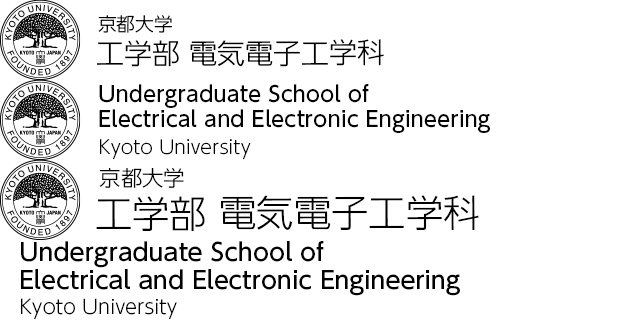Electronic Material Science and Engineering
A main topic of our laboratory is basic and application research of organic molecular materials, which are highly expected to show new electronic and optical functions at a nanometer scale. Several active research projects are running in our lab, which widely include new instrumentation based on "Advanced Nanoprobe Technology", developments of "Nanoscale Manipulation Techniques of Single Molecules" and "Organic Electronic Thin-Film Devices", investigation and application of electronic and optical properties of organic materials and photocatalysts. We are aiming at innovation of new-generation electronic devices through these exciting studies.
Academic Staff
Kei KOBAYASHI
Associate Professor (Graduate School of Engineering)
Research Interests
Contacts
TEL: +81-75-383-2307
FAX: +81-75-383-2308
E-mail: keicoba@iic.kyoto-u.ac.jp
Selected Topics of Our Research
Single Molecular Measurement Technique with Advanced Nanoprobe Technology
Establishment of real-space structural and functional analysis at an atomic/molecular scale is absolutely necessary for evaluating various electronic properties in a system of single or a small number of organic molecules. A main purpose of this study is developing dynamic-mode atomic force microscopy (DFM) with a real atomic resolution for all surfaces under various surroundings (e.g., in air, in vacuum, in water, etc.), and we are proceeding toward the development of multi-functional analytical probe microscopes capable of local measurements of optical and electronic properties.
The final goal of this study is employment of these methods for nanoscale characterization of functional organic layers, inorganic semiconductors, carbon nanotubes, biomaterials, for the purpose of making guidelines for development of new-generation nanoscale devices.
Control of Structure and Orientation of Functional Organic Molecules and its Device Application
Organic Molecules own some excellent characteristics as electronic material, such as flexibility, low-weight and simple fabrication processes. This feature indicates some potential for creating new industrial fields of innovative flexible (nanoscale) electronic devices. However, control of crystalline structures and molecular orientation inside ultrathin layers or thicker films is of great importance for functionalizing each molecule sufficiently, because of strong anisotropy of optical and electronic properties of molecules. In this background, our group continues fabrication of thin films with various functional organic molecules, and those characterizations with original X-ray diffraction and other spectroscopic methods, electrical measurements and so on. We aim at the development of highly-efficient control methods of organic thin-film structures for generating supreme performance of electronic properties.
For example, device characteristics (e.g., carrier mobility and threshold voltage) of organic field-effect transistors (OFETs) made of organic semiconductors such as pentacene, oligothiophene are mainly determined by crystalline phase and molecular orientation of organic semiconducting layers. Interfaces between gate insulators and organic semiconducting layers give large influences to OFET performance. In our group, control of OFET characteristics and elucidation of its operation have been attempted with structural control of organic semiconducting layers and insertion of gate buffer layers.
Besides, organic ferroelectric materials have been intensely studied in our group for a long time. Ferroelectricity of organic materials derives from molecular rotation, propagation of conformation and other intermolecular cooperative motions, which are characteristics of only organic (polymer) materials. Now our research is directed toward both investigation of these ferroelectric properties and application of organic ferroelectrics to ultrahigh-density nonvolatile memories and other ferroelectric devices.
